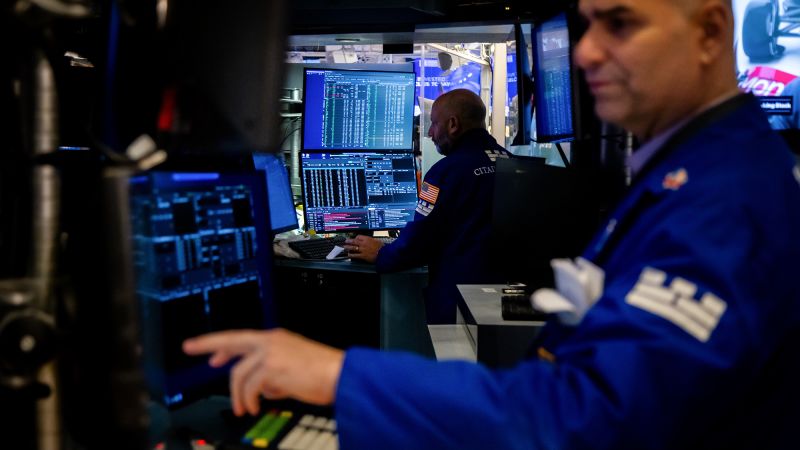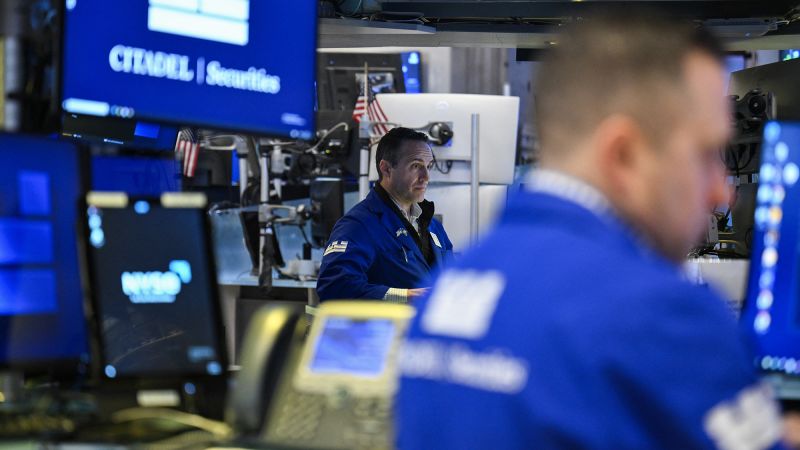The U.S. stock market experienced a significant downturn on Thursday, following the White House’s announcement of a staggering 145% tariff on imports from China, which escalated tensions in the ongoing trade war. After a remarkable surge of nearly 3,000 points the previous day, the Dow Jones Industrial Average faced a turbulent session, ultimately dropping 1,015 points, or 2.5%. At its lowest, the index plummeted by as much as 2,100 points during the trading day.
Market Reactions and Economic Indicators
The S&P 500 index fell sharply by 3.46%, while the Nasdaq Composite saw a significant decline of 4.31%. This downturn comes after the S&P had its best performance since 2008, while the Nasdaq recorded its second-best day ever just a day prior. Despite the optimism from Wednesday’s rally, the market is quickly sobering up, as the implications of President Donald Trump’s tariffs weigh heavily on investor sentiment.
- Key Market Movements:
- Dow: Down 1,015 points (2.5%)
- S&P 500: Down 3.46%
- Nasdaq: Down 4.31%
In a cabinet meeting, Trump acknowledged the complexities of transitioning back from these tariffs, stating, “Yesterday was a monumental day. Transition difficulties are expected, but we are pleased with the nation’s progress.” He emphasized the need for fair treatment in global trade.
Dollar Decline and Gold Surge
The U.S. dollar index suffered a 1.7% drop, marking its lowest level since early October. This decline is reflective of investor unease regarding the overall health of the U.S. economy. In contrast, gold prices soared to a record high, exceeding $3,170 per troy ounce, as investors flocked to safe-haven assets amidst economic uncertainty.
Tariffs and Future Outlook
Following a brief period of optimism when Trump temporarily suspended certain tariffs, the reality of economic disruption set in. Economists warn that the damage from these tariffs is likely irreversible, with several predicting the U.S. economy could face a recession. The significant market losses and ongoing uncertainty regarding trade policy only add to these concerns.
- Current Tariffs:
- 10% universal tariff in effect
- 25% tariffs on steel and aluminum
- 25% tariffs on auto imports
- Additional tariffs on pharmaceuticals and other goods are still planned.
Volatility and Investor Sentiment
The CBOE Volatility Index, often referred to as Wall Street’s fear gauge, surged by 40%, indicating heightened market anxiety. Economists and financial analysts, including those from Goldman Sachs and JPMorgan, continue to project a significant risk of recession, emphasizing that the recent tariff actions have created a precarious economic environment.
International Trade Tensions
The trade conflict with China remains unresolved, with the newly imposed 145% tariffs on Chinese goods being a significant point of contention. In response, China has implemented retaliatory tariffs of 84% on U.S. imports. A spokesperson for the Chinese government reiterated their willingness to negotiate, but also emphasized that they would not yield to pressure from the U.S.
Market Recovery and Global Impacts
Despite the turmoil in the U.S. markets, international indices showed promising recoveries. Japan’s Nikkei 225 rose by over 9%, while South Korea’s Kospi climbed 6.6%. European stocks also saw significant gains after the European Commission paused retaliatory tariffs, highlighting the importance of stabilizing global trade relations.
- Global Index Performance:
- Nikkei 225: Up 9%
- Kospi: Up 6.6%
- STOXX 600: Up 3.7%
In conclusion, while temporary pauses in tariff implementations have provided a momentary reprieve, the underlying economic challenges and uncertainties remain. Investors and analysts alike are keeping a close watch on the evolving trade situation and its potential impact on both the U.S. and global economies.










